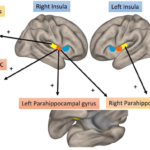 ACR CONVERGENCE 2021—A phase 3, randomized study demonstrated that guselkumab (Tremfya) improves joint and skin symptoms in patients with psoriatic arthritis (PsA) through two years. These data were presented by Iain McInnes, MD, professor of medicine at the Institute of Infection, Immunity and Inflammation, University of Glasgow School of Medicine, Glasgow, Scotland, during ACR Convergence 2021.
ACR CONVERGENCE 2021—A phase 3, randomized study demonstrated that guselkumab (Tremfya) improves joint and skin symptoms in patients with psoriatic arthritis (PsA) through two years. These data were presented by Iain McInnes, MD, professor of medicine at the Institute of Infection, Immunity and Inflammation, University of Glasgow School of Medicine, Glasgow, Scotland, during ACR Convergence 2021.
Researchers enrolled 739 adult patients with PsA in this double-blind, randomized controlled trial. The patients were biologic-naive and had active disease, defined as having at least five swollen joints plus at least five tender joints and a C-reactive protein (CRP) of at least 0.6 mg/dL. Patients were randomized to receive either 100 mg of guselkumab every four weeks, 100 mg of guselkumab at weeks 0 and 5 and every eight weeks thereafter, or placebo with a switch at week 24 to 100 mg of guselkumab every four weeks.
Efficacy end points included ACR 20/50/70 responses, Health Assessment Questionnaire Disability Index (HAQ-DI) scores, Psoriasis Area and Severity Index (PASI) 75/90/100 response and an Investigator’s Global Assessment (IGA). Clinical efficacy was assessed in the modified intention to treat population through week 100, with missing data imputation. Changes in PsA-modified van der Heijde-Sharpe (vdH-S) radiographic scores and safety assessments were observed through week 112.
The Results
At week 24, 96% (n=712) of patients continued with guselkumab, with 93% (n=687) continuing to week 52 and 88% (n=652) continuing to week 100. At week 100, the ACR 20 results ranged from 68–78%, the ACR50 results ranged from 48–56% and the ACR 70 results ranged from 30–36%. The ACR 20 response rates in the modified intention to treat population continued to increase after week 24. At week 100, the ACR 20 response was 76% for patients who received guselkumab every four weeks and 74% for those who received guselkumab every eight weeks.
For patients who switched from placebo to guselkumab after week 24, the ACR 20 response at week 100 was 68%. Similar patterns and rates of response occurred for the other efficacy measures (e.g., ACR 50/70, HAQ-DI, PASI 90/100). The IGA and PASI 75 response rates were consistent through week 100 in patients who received guselkumab every four weeks and every eight weeks. The week 100 efficacy data for patients who switched from placebo to guselkumab at week 24 were similar to the data for patients treated with guselkumab every four weeks and every eight weeks. Low rates of radiographic progression were observed during the study.

